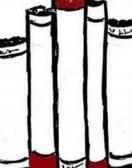
Next choice…
In this country in Africa there was a president and there was also a king. They belonged to different tribes. The enmity of the tribes was old, and with independence their anxieties about one another became acute. The king and the president intrigued with the local representatives of white governments.
As I mentioned before, the Landing Book Shelves* edition of In a Free State contains alongside the title piece, four other short stories. Two are first person travel narratives, extracts from a journal which bookend the stories as a prologue and epilogue. Following the prologue are two short stories, ‘One out of many’ and ‘Tell me who to kill’. All of the pieces comprising In a Free State have themes of alienation, displacement and racial tensions. People such as Santosh in ‘One out of many’ have emigrated, and now find themselves struggling to make sense of a new environment where they cling to the periphery of an unfamiliar society. All of the pieces give you plenty of food for thought while not being particularly cheery reads. I just want to focus here on the title piece (which has since been published separately) to give you an idea of the themes running through the book as a whole.
The lines I’ve quoted above are from the deceptively benign opening to the novella In a Free State, sounding somewhat like the start of a simple fable of two warring factions. You imagine that it will all probably come out alright in the end. But a few lines further in when the reader learns that despite the king being more popular with the white people, they are going to support the president because he is stronger, then you suspect that things are not going to be straightforward. By the time you finish the first paragraph you know that armed conflict between the president (who is in control of the army) and the king and his people is inevitable. The president having the support of the white people naturally tips the balance of power.
The structure of the plot is based around a car journey, which is a useful device to develop characters and introduce places and events. The road trip sees a couple of white travellers, Bobby and Linda making the 400 mile journey from the capital where they had been attending a seminar to what is still, despite independence, known as the ‘Southern Collectorate’ . Bobby is a government official and we first encounter him in a hotel trying unsuccessfully to pick up a young Zulu man with whom he shares a drink. Linda, a colleague’s wife and Bobby aren’t friends, despite or perhaps because of the claustrophobic nature of compound life. Their road relationship fluctuates between being companionable and prickly during the journey as events overtake them; and also as they discuss their feeling towards Africa, its people and its politics. Bobby, sporting a ‘native shirt’ seems anxious to fit in and show solidarity with the African population, having a ’brisk, friendly, simple voice he used with country Africans’. At one point Linda challenges his attitude over giving a couple of African hitchhiker a lift by saying, ‘I’m not going to get myself killed simply because I’m too nice to be rude to Africans’.
Naipaul successfully builds up the tension during the drive as Bobby and Linda become aware that inter-tribal antagonism is building up to the extent that the President’s camp is hunting the King down. Part of the way into the trip Bobby and Linda discover from an American acquaintance that a 4 o’clock curfew is in place in the Southern Collectorate which will mean breaking the journey with an overnight stop. They stay in a run-down hotel where the owner, an elderly white colonel treats his black members of staff just as appallingly as he would have done in colonial days. A distinct atmosphere of menace hangs over the few hours they spend at the decaying hotel. The next day on the home stretch, Bobby and Linda are caught up in a tense, violent incident at a checkpoint, before they finally make it back to the apparent security of the government compound.
After reading Naipaul’s Booker Prize winning novel I was left feeling rather jaded and very disillusioned with human nature. Few of the characters in the story seem very appealing and many, such as the colonel are pretty unpleasant. Naipaul doesn’t seem to spare any of the races: he paints an unattractive picture of most of the white, black and Asian characters. It is hard to find any warmth in the novel, gripping as it is, and there seems to be little optimism for the future in this un-named African state. Greed, corruption, apathy and violence punctuate the action in the story. Naipaul provides no easy answers to questions on the nature of post-colonial society.
My final Landing Eight book will feature in an up-coming blog post and then I will be trawling the shelves for more material. I do hope to introduce a couple more #LandingAuthor items in the near future too. I also hope to ensure that things aren’t so quiet on The Landing during the autumn months as they’ve been lately.
All for now, and in the meantime drop me a line if you have any thoughts on Naipaul’s work.
.
* And thanks to He Who Put the Shelves Up since I’ve been using his copy!

